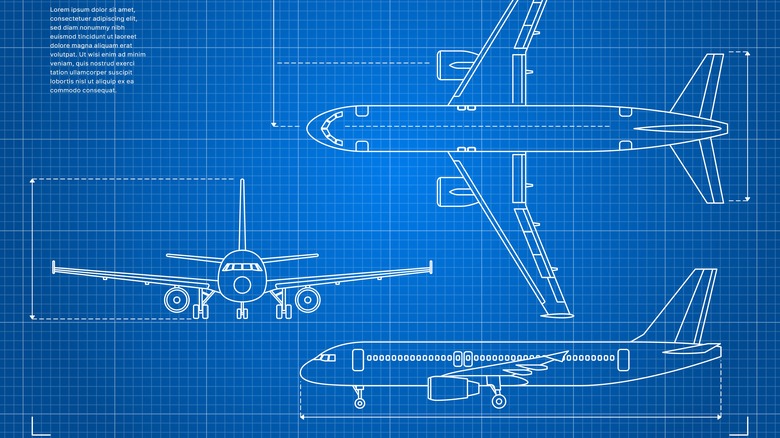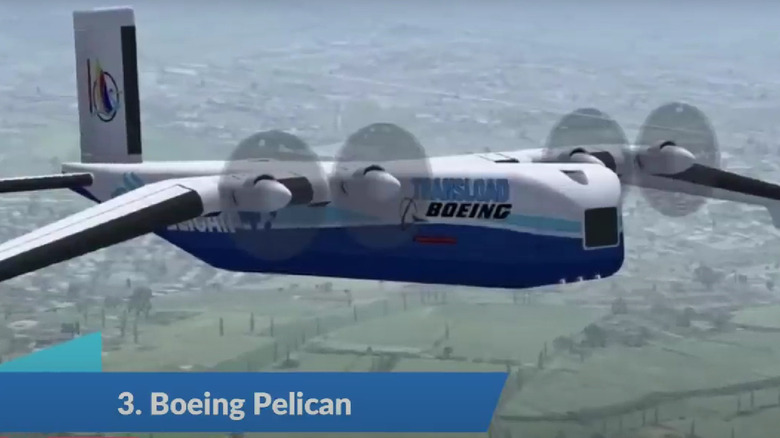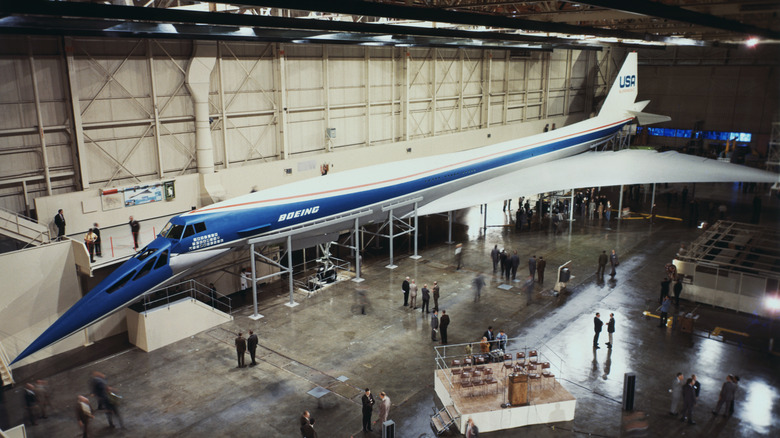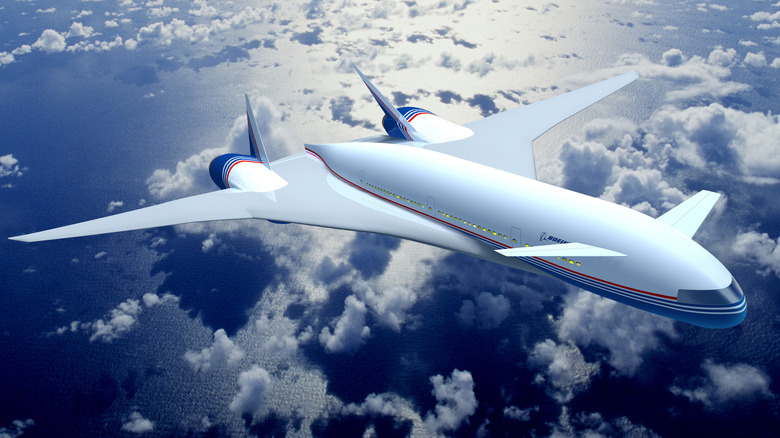3 Most Interesting Boeing Concept Planes That Never Flew
Aerospace engineers are always thinking of new designs for aircraft, which is great because airlines and the military are always seeking innovative ideas that will give them an edge. Unfortunately, not every idea ever makes it beyond the drawing board. This could be due to any number of factors, from a ballooning budget to the unrealistic physics of a design. Some of the concepts are intended to carry more passengers than any other aircraft before it, carry more cargo, travel faster, or a combination thereof. Some designers might simply want to develop something that's unique.
Designers often want to create an aircraft that breaks the mold, something that doesn't fit the traditional design of airplanes. Boeing's Phantom Works group is the company's advanced research and development division, responsible for coming up with some of its most creative ideas. This is the division that has developed such projects like the T-7A Red Hawk, MQ-28 Ghost Bat, and X-45. However, not every idea is feasible. Some might get to the prototyping stage of a project, but many don't become more than an idea or a blueprint.
Boeing's Pelican concept was huge
Boeing's Phantom Works division came up with the Pelican, a monstrous concept that would have made other planes, including the Antonov An-225, look like toy models. Calling it a high-capacity cargo plane was an understatement. The main body was supposed to be longer than an American football field and have a 500-foot wingspan. The area of the wings was estimated to be more than an acre. The Pelican would have had four turboprop engines that could have produced enough thrust to carry up to 1.5 million lbs.
Its ability to fly as low as 20 feet above the ocean's surface coupled with its wing-in ground design would have allowed the Pelican to take advantage of an aerodynamic principle known as ground effect, reducing drag and fuel burn. Assembly Magazine states, "Flying close to water, wing downwash angles and tip vortices are suppressed, resulting in a major drag reduction and outstanding cruise efficiency." When flying that low across an ocean, it could fly a total of 10,000 nautical miles. If flying over land, which it would do at 20,000 feet, it could travel 6,500 nautical miles instead.
If commercial airlines wanted to use the Pelican to fly passengers, it could have seated 3,000. This wouldn't have been a feasible use for the plane, however, as it would have bankrupted any insurance company after only one mishap. It's unknown why Boeing never went forward with the Pelican. It seems that in 2006, Boeing focused on other projects.
Boeing wanted to challenge the Concorde with the 2707
Boeing's 2707 concept was a supersonic transport (SST) that would have flown faster than the popular Concord while carrying more passengers, making it quite a competitor to the European SST. Unfortunately, due to environmental concerns and funding issues, the project never made it further than a couple of prototypes being built. That was after 26 different airlines ordered a combined 122 units. When the American government had to pull its funding because of a combination of factors, such as the Vietnam War, the whole project fell apart. Engineers initially envisioned it with a variable-swept wing design, but that proved too heavy for what they were trying to accomplish and settled for a delta wing design.
The SST had a maximum cruising speed of Mach 2.7, which is faster than 2,000 miles per hour, thanks to its four engines that produced more than 60,000 pounds of thrust. Furthermore, Boeing aimed to more than double the jet's capacity for passengers compared to its competitor. While the Concorde could hold up to 128 passengers, the 2707 would have held around 300. Unfortunately, that much weight combined with that much thrust would have produced unseemly amounts of noise that nobody at or near an airfield would have appreciated.
It has been more than 20 years since a supersonic passenger aircraft soared, and it's unclear when or if another one will.
The Sonic Cruiser would have been faster than other passenger planes
The British Airlines Concorde not only set some world records for traversing the Atlantic, but it also made an impression on people everywhere, getting some aerospace manufacturers interested in creating their own supersonic transport. Boeing had a few ideas that ultimately failed, starting with the model 733, that eventually transformed into the aforementioned B2707. However, in 2001, the manufacturer came up with a subsonic aircraft that could ferry passengers to their destinations faster than the average plane without breaking the sound barrier. This Sonic cruiser would have carried anywhere between 200 and 250 passengers while flying as fast as Mach 0.98, 20% faster than traditional planes at the time.
The Sonic Cruiser design had angled canards near the front of the plane and a pair of engines in the rare, drastically different from every other tube-and-wing design airlines tend to favor. Unfortunately, the tragic events of September 11, 2001, and the following war on terrorism forced fuel prices to soar at the time the Sonic Cruiser was in production. Airlines and manufacturers opted to keep their wallets closed, and the project was scrapped in favor of the more cost-efficient Boeing 787.



